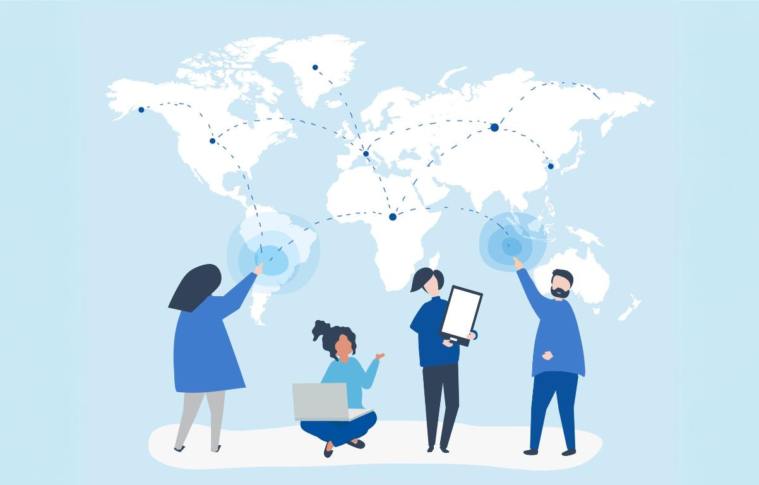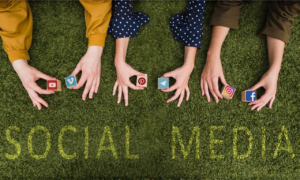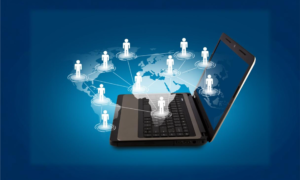Background
The relationship between technology and society has evolved significantly over the past century. Technology has been a driving force behind many societal changes, influencing everything from how people communicate and learn, to how they work and interact with the world. This case study explores the various ways in which technology has impacted society, highlighting both the positive and negative consequences of this relationship. We will focus on several key areas: communication, education, economy, healthcare, and social behavior.
Key Areas of Impact
1. Communication: The Digital Revolution
The advent of the internet, mobile technology, and social media has dramatically changed the way people communicate. Platforms such as Facebook, Twitter, Instagram, and messaging apps like WhatsApp have connected billions of people globally, reshaping how individuals interact with one another.
- Example: Social Media and Global Connectivity Social media platforms have not only allowed individuals to stay in touch with friends and family but have also created spaces for public discourse, activism, and business. The ease of sharing information and opinions has transformed global communication, allowing ideas to spread rapidly.
- Impact: The instantaneous nature of digital communication has broken down geographical barriers, allowing people to maintain relationships regardless of distance. However, it has also raised concerns about the spread of misinformation, cyberbullying, and privacy issues. Despite these challenges, the role of social media in shaping public opinion, political discourse, and social movements cannot be understated.
2. Education: Accessibility and Personalization
Technology has revolutionized the education sector, making learning more accessible, personalized, and flexible. E-learning platforms, educational apps, and digital classrooms have created new opportunities for students to engage with content, regardless of their location or socio-economic status.
- Example: Online Education and MOOCs The rise of Massive Open Online Courses (MOOCs) such as Coursera, edX, and Udemy has democratized education. Students around the world can now access courses from top universities and institutions, often for free or at a low cost. These platforms offer learners the ability to study at their own pace, providing a more flexible approach to education.
- Impact: The global reach of online education has made it easier for individuals in developing countries to access high-quality educational resources, leveling the playing field. However, the digital divide remains a significant challenge, as not all students have reliable internet access or digital devices, exacerbating inequalities in education.
3. Economy: Innovation and Job Creation
Technology has driven economic growth by enabling innovation, streamlining business operations, and creating new industries. The rise of the digital economy has given birth to new job sectors, including software development, digital marketing, data analysis, and the gig economy.
- Example: The Gig Economy and Digital Platforms Companies like Uber, Airbnb, and Fiverr have enabled individuals to earn money through flexible, on-demand work. These platforms have transformed traditional job structures, allowing people to become entrepreneurs in their own right.
- Impact: The gig economy has created millions of new jobs, providing workers with more autonomy and flexibility. However, it has also raised concerns about job security, workers’ rights, and income instability, as many gig workers do not have access to traditional employee benefits such as health insurance or retirement savings.
4. Healthcare: Advancements in Medical Technology
Technological advancements in healthcare have improved the quality of care, increased life expectancy, and made healthcare more accessible to people in remote areas. From telemedicine to artificial intelligence (AI)-powered diagnostic tools, technology has played a crucial role in improving health outcomes.
- Example: Telemedicine and Remote Healthcare Telemedicine allows patients to consult with healthcare providers remotely, reducing the need for in-person visits and improving access to care. This is especially beneficial for people in rural or underserved areas who may not have easy access to medical facilities.
- Impact: Telemedicine has made healthcare more accessible, particularly for those with mobility issues or those living in areas with a shortage of healthcare providers. However, challenges such as data privacy, the need for reliable internet access, and the potential for misdiagnosis in remote consultations remain concerns.
5. Social Behavior: Changes in Interaction and Relationships
The influence of technology on social behavior is profound, particularly in how people interact, form relationships, and engage with society. While technology has brought people closer in many ways, it has also altered the dynamics of human interaction.
- Example: Smartphones and Social Interaction The widespread use of smartphones has led to constant connectivity, but it has also raised concerns about the erosion of face-to-face communication. Social media platforms have allowed people to stay connected, but they have also led to issues such as social isolation, FOMO (Fear of Missing Out), and decreased attention spans.
- Impact: Technology has provided new ways for people to stay in touch, but it has also created challenges in terms of social relationships. Research suggests that excessive screen time and social media use can contribute to mental health issues such as anxiety and depression, especially among teenagers and young adults.
Challenges and Ethical Considerations
While technology has brought about positive change, it has also presented several challenges that society must address. Key concerns include:
- Privacy and Data Security: With the rise of digital technologies, there has been an increasing amount of personal data being collected, raising concerns about privacy and data security. Cybersecurity threats, data breaches, and unauthorized surveillance have become major issues.
- Job Displacement: The automation of tasks through AI and robotics is making many traditional jobs obsolete. While new job sectors are emerging, there is a growing need for reskilling and upskilling workers to adapt to the changing job market.
- Digital Divide: Despite advancements in technology, access to the internet and digital tools remains unequal. People in low-income or rural areas often lack the resources to benefit from technological advancements, exacerbating inequalities in education, healthcare, and employment opportunities.
- Ethical Use of AI and Automation: As AI continues to advance, questions about its ethical implications arise. Issues related to bias in AI algorithms, the potential for job loss, and the misuse of AI in areas like surveillance and warfare require careful consideration.
Conclusion
The impact of technology on society is multifaceted and ever-evolving. While it has brought immense benefits in areas such as healthcare, education, and economic growth, it has also introduced new challenges and ethical dilemmas. As society continues to embrace technological advancements, it is crucial to address the associated risks and ensure that technology is used in ways that promote social good, inclusivity, and fairness.
The future of technology and society lies in striking a balance between innovation and responsibility. By fostering collaboration between policymakers, businesses, and technology developers, society can maximize the benefits of technology while mitigating its potential negative consequences. As we move forward, the key will be ensuring that technology serves humanity’s best interests, enhancing lives without compromising ethical standards.



